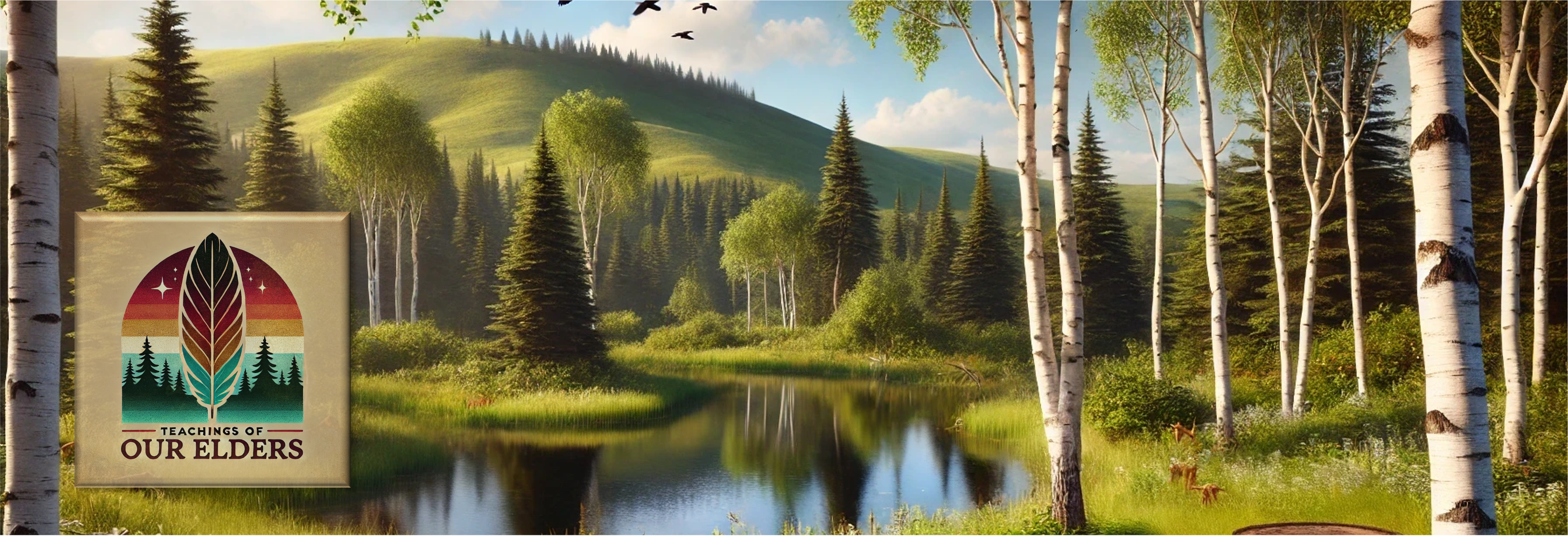| Inquiry Design Model (IDM) Blueprint™ |
| “Geography & Interconnectedness” |
| NDNAEU 1 “Sacred Relatives”, NDNAEU 7 “Native Identity” |
| Compelling Question | How does our interconnectedness to the land and our understanding of geography help us understand the world around us? |
| Standards and Practices | Geography G.K_2.1 Construct maps, graphs, and other representations that contain symbols, labels, and legends. Geography G.K_2.2 Describe how the physical environment affects people and how people affect the physical environment. Geography G.3_5.1 Construct maps, graphs, and other representations of both familiar and unfamiliar places. Geography G.3_5.2 Use geographic tools and technologies to acquire, process, and report information from a spatial perspective. Geography G.6_12.1 Describe the physical processes that shape the Earth’s surface and how these affect the lives of people who live there. |
| Staging the Question | How does the language of geography help us describe and understand the world? |
| Supporting Question 1 | Supporting Question 2 | Supporting Question 3 |
| What are the Five Themes of Geography and how are they important to a region and people? | How does vocabulary help us to describe the world around us? | How are we related or connected to the world around us? |
| Formative Performance Task | Formative Performance Task | Formative Performance Task |
| Share the video below from Dr. Wayne Fox to begin a discussion about our relationship to the land and present the five themes and their definitions. The teacher will ask the students to imagine that the school and the school grounds is a region of its own. What landforms are present? What are the elements of nature that play a role in shaping the school environment? Then the teacher will divide the class into five groups and assign one of the Five Themes of Geography (1)Location, 2)Place, 3)Human-environment Interaction, 4)Movement, 5)Regions) to each group. Each group will have a large piece of poster board or butcher paper. Each group will draw a map of the school and school grounds. Then they will label how their specific theme (eg. Movement) takes place or is an important part of their school environment. Each group will present their labeled maps to the class. This could be done by also allowing students to select one of the five themes and do the same task individually. Then they have to partner up with other students in the class and share their labeled maps. | Discuss the following Geography terms: cardinal direction, compass, latitude , longitude, meridians, delta, bay, cape, gulf, island, lake, mountain, range, peninsula, plain, sea, valley Use the link below to help students become familiar with the above vocabulary. Follow up with the National Geographic video that shows the landforms around the world. Ask the students make two columns in their notebooks. In column A, which of these terms might be featured on a map of North Dakota? In column B, which of these terms definitely not be featured on a map of North Dakota? | Watch the video of JT Shining Oneside below. JT discusses the importance of seeing all of creation as sacred and connected to us. Have students choose one “Learn From” question from Teachings of Our Elders website below JT Shining Oneside’s video to write reflection paragraph. Then present the students these questions and ask them to write a second paragraph reflection: Think of something in nature that you enjoy. It could be a special place in the outdoors, an animal, or favorite tree or flower. Have the students write a third paragraph: How are we related or connected to the world around us? After they have written their three paragraphs, configure the class into groups of 3-5. Have them share with each other an excerpt from from their three paragraph reflections. Then have the students return to their desks and write a few more sentences about something they found interesting that one of their classmates shared in their small groups. |
| Featured Sources | Featured Sources | Featured Sources |
| http://www.educationworld.com/a_lesson/lesson/lesson071.shtml https://teachingsofourelders.org/essential-understanding-1-dr-wayne-fox/ | https://www.nationalgeographic.org/activity/mapping-landforms/ | https://teachingsofourelders.org/essential-understanding-1-jt-shining-oneside/ |
| SUMMATIVE PERFORMANCE TASK: Supported Claim (written/spoken) or Demonstration of Process (project-based) | Have students create a geographical model of the landscape in which they live. Have them include both the vocabulary they have been learning as well as ways they relate to the things found in the environment around them. |
| SUMMATIVE PERFORMANCE TASK: Extension | Invite an elder in to talk about how we are all interconnected as living and non-living things on this earth. How does a deep understanding of interconnectedness change the way we interact with our surroundings? |
| Taking Informed Action / Real World Application | Ask students to invent an island that is the imaginary newest state to the United States of America. Then ask the students to label as many geography terms onto their map as they can. After the students have done that, ask the students to label and describe how the five themes of geography are present in this new island state. Finally, flip over their map and on the backside, reflect on this question: how is the relationship between land and people important? |

